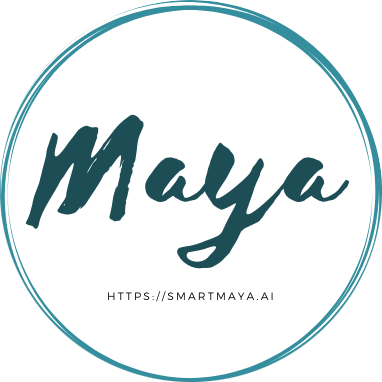
AI Adoption by SMEs in 2025: Global Trends & Tools
AI Adoption by SMEs in 2025
AI is no longer the future of business. It’s the current competitive edge — even for the smallest players.
In 2025, small and medium-sized enterprises (SMEs) are not just testing artificial intelligence — they’re deploying it to generate content, scale customer service, and automate repetitive tasks.
From Singapore to São Paulo, SMEs are increasingly turning to AI to do what used to require a team: run operations, market products, and stay visible online.
This article distills insights from our full 10,000+ word research report on global SME AI adoption trends, challenges, and tools.
It highlights how SMEs are using AI across regions, what’s driving adoption, where roadblocks still exist — and why platforms like Maya AI are uniquely positioned to serve this wave.
📘 Link to Full Report → How SMEs Are Using AI in 2025 – Regional Trends & Market Outlook
🔍 Key Findings at a Glance: AI Adoption by SMEs in 2025
- AI use among SMEs has nearly doubled across major regions between 2023 and 2025.
- Asia-Pacific SMEs are leading the generative AI adoption curve, especially in content creation.
- Europe is catching up fast, backed by €225B in public AI funding.
- North America remains the most mature market, with ~40% of small businesses using AI in marketing or ops.
- Maya AI, a lightweight AI agent platform, is emerging as a go-to solution for SMEs needing content at scale — from memes to blogs to smart replies.
🌍 Global Snapshot: How SMEs Are Actually Using AI in 2025
| SME Use Case | Real-World AI Application |
|---|---|
| Marketing & Content | Auto-generation of blogs, social posts, memes via tools like Maya AI |
| Customer Service | AI chatbots for 24/7 support and FAQ handling |
| Sales Outreach | Personalized email generation and reply handling |
| Operations | Invoice, proposal, and HR document automation |
| Decision-Making | Predictive analytics for inventory, sales, and hiring |
Across industries — retail, e-commerce, manufacturing, agencies, healthcare — AI is replacing routine work, not people. In our full report, we highlight stories of:
- A solopreneur in India doubling revenue without hiring, using Maya AI for meme and blog content
- A Malaysian SME appearing “like a full agency” thanks to smart auto-replies
- Latin American firms using WhatsApp-based AI to book appointments and answer menu questions
🧠 Want detailed use cases per region and sector? Read the full report here →
🌐 Regional Trends: AI Adoption by SMEs Isn’t Equal
While global AI awareness is high, actual usage varies widely across regions. Here’s a high-level view:
🇺🇸 North America
- ~40% of small businesses use AI tools (up from 23% in 2023)
- Popular in marketing, customer engagement, and analytics
- Tools like ChatGPT, Jasper, and Maya AI see mainstream adoption
🇪🇺 Europe
- SME AI use jumped from 8% to 13.5% in a year (Eurostat, 2025)
- Ethical AI and compliance drive tool selection
- Government-subsidized AI programs (especially in the Netherlands, Finland, Ireland)
🌏 Asia-Pacific
- 70%+ of companies use AI in at least one business function
- Massive surge in content creation via generative AI tools
- India, China, and Southeast Asia SMEs rapidly integrating AI with e-commerce and mobile
🌎 Latin America
- Adoption slower overall, but high growth in WhatsApp-based AI and fintech AI
- Argentina and Colombia report 45–47% of SMEs using AI in some form
- AI used to scale service, reduce support costs, and reach rural users
🌍 Middle East & Africa
- High top-down momentum in UAE, KSA via national AI strategies
- MEA leaders: 47% already using or planning to use AI in 2025
- Emerging African startups are offering AI-powered micro-lending, farming advisory, and chat support in local languages
📈 Market projections and regional investment data → See full market outlook in the report
🚧 The 5 Biggest Challenges SMEs Face with AI : AI Adoption by SMEs in 2025
- Costs & unclear ROI: Tools must show value quickly or they get dropped.
- Lack of skills: Most SMEs don’t have data scientists or prompt engineers.
- Integration barriers: Off-the-shelf AI tools often don’t “talk to” legacy systems.
- Overchoice and hype: Too many tools, too little clarity on what works.
- Data concerns: Especially for regulated industries (e.g., GDPR in Europe).
These hurdles explain why many SMEs try AI but quietly churn — unless tools are built for their bandwidth and budget.
🚀 Platforms Like Maya AI Are Filling the Gap
Maya AI is emerging as a popular SME-focused AI platform, offering:
✅ Meme Generator — create funny, trending, on-brand memes in seconds
✅ Blog Writer — generate SEO-optimized blog posts based on your niche
✅ Smart Reply AI — auto-reply to leads and customers with human-like nuance
✅ Create-Your-Own Agent — build instant tools with just an input, no code
✅ Viral Post Generator — ideate & schedule posts that actually perform 🎯 Why it works:
- No technical skills required
- Free to try
- Supports multiple languages
- Works for solopreneurs, marketers, and founders
“Maya AI felt like hiring 3 top performers, minus the salaries.” — D2C skincare founder (India)
🔗 Try Maya AI free → https://app.smartmaya.ai
🧾 Useful for Journalists, Researchers & SME Founders
This piece is a summary of our comprehensive 30+ source, multi-region research study. The full report includes:
- Market size tables by region
- Sector-by-sector use cases
- AI platform comparisons
- Analyst quotes, policy links, and live case studies
📎 Link to Full Report: How SMEs Are Using AI in 2025 – Complete Analysis


















